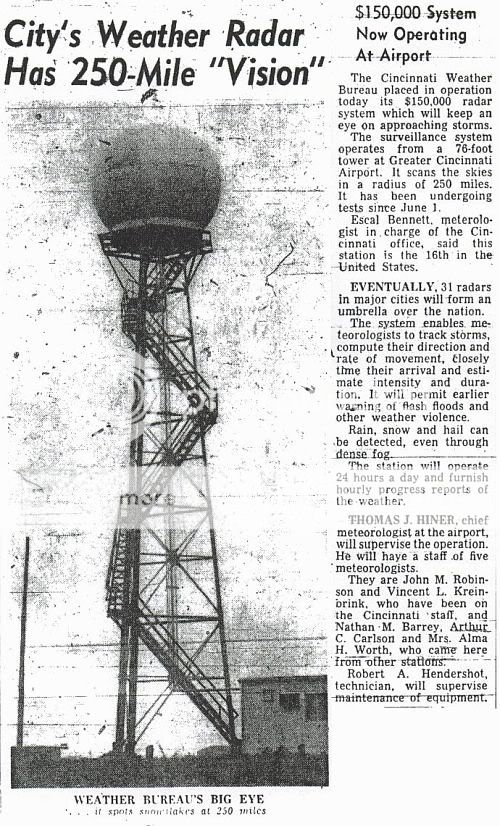Here's a map of the pre-modernized radar network that I've put together. It's based on other maps and documentation and there could still be errors.

There should be 45 WSR-57s, 13 WSR-74Ss, 66 WSR-74Cs and one WR100-5. This includes the one WSR-74S at San Juan, PR. The 22 ARTC radars were added to the network in 1966. Several WSR-57s were replaced by 74Ss in the early 80s, including Marseilles, IL, Washington, DC (was at IAD, 74S was installed at Patuxent River NAS), Key West, FL, Memphis, TN. Three WSR-74s were equipped with a Doppler add-on by EEC. Those were at Montgomery and Huntsville, AL and at Marseilles, IL. As Mike Smith mentioned, some 74Ss were used as local warning radars (such as Jackson, KY). That WR100-5 in Victoria, TX was manufactured by EEC in the early 70s (before the 74 series).
The first WSR-57 to be installed was at the Miami Hurricane Center in 1959 and the last was at Hondo, TX in 1971. I think the first WSR-74C was installed at Corpus Christi, TX on 2/1/76. There is still at least one 74C that has not been decommissioned and is located at Williston, ND.
The orignal 31 WSR-57s were installed starting in 1959 through the early 60s at existing Weather Bureau offices. Here's a map of the original 31

According to Whiton ET AL.
Forteen of these were placed along the Atlantic and Gulf coasts to aid in hurricane tracking. Some are located inland of the coat to track decaying tropical systems and heavy rains. As mentioned earlier, some were placed in the central part of the country for severe storm tracking. Two were installed in the mountains of the west. The Sacramento radar was put there to support state and federal hydrological efforts and at Point Six Mountain (near Missoula, MT) to locate areas where lightning could create wildfires. The WSR-57 at Medford was installed in 1971 with the second batch of -57s. The radar at Catalina Island (atop Blackjack Mountain) was only in operation for part of the 60s.
The U.S. Navy bought eight WSR-57s and renamed the units according to their military nomenclature: AN/FPS-41.
Forteen additional WSR-57s were purchased and installed from 1967-1971.
Early WSR series
These were APS-2F aircraft detection radars converted for meteorological uses. At the height of the program in 1975, there was 82 WSR-1, 1a, 3 and 4 radars in service in the NWS. These were all replaced by the WSR-74C line from 1976 to 1980. There was also a Decca-41 radar at Akron, Ohio. These early WSRs are pretty similar, but their consoles and electronics differ somewhat. These early radars all had a 10.5 cm wavelength, peak power output of 50 kw, a beamwidth of 4 degrees and a pulse duration of 1 microsecond in short pulse mode and 2 microseconds in long pulse (except the WSR-4, which was 4 microseconds).
First Weather Radar
The first radar to be built specifically for meteorological purposes was the AN/CPS-9, built for the Air Weather Service and began installations in 1953. The CPS-9 was an X-band system, had a 1 degree beamwidth, a 5 microsecond long pulse mode and 0.5 microsecond short pulse mode. Distance on the PPI and RHI scopes were measured in statute miles (instead of nautical miles).
There's an excellent paper on the pre-nexrad era from Weather and Forecasting called "History of Operational Use of Weather Radar by U.S. Weather Services. Part I: The Pre-Nexrad Era". It's well worth a read if you're interested.
WSR-57 installation at Greater Cincinnati Airport in 1960













